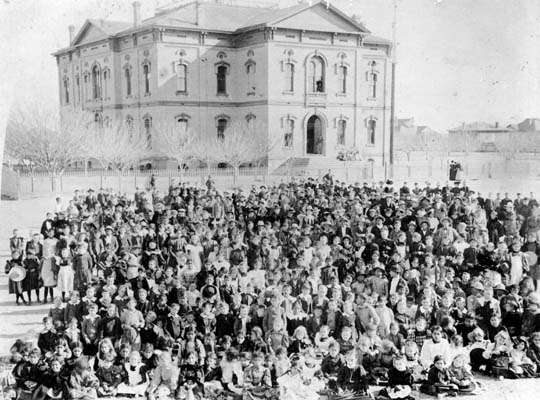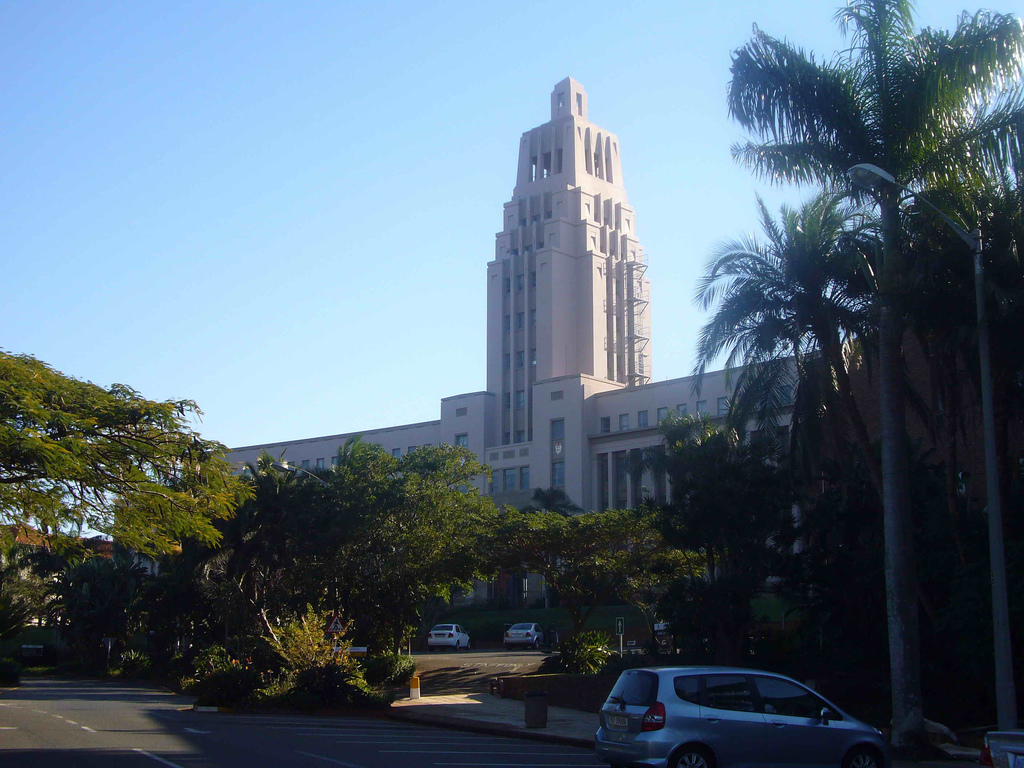|
Hilda Kuper
Hilda Beemer Kuper (''née'' Beemer; 23 August 1911 – 23 April 1992) was a social anthropologist most notable for her extensive work on Swazi culture. Early life Born to Lithuanian Jewish and Austrian Jewish parents in Bulawayo, Southern Rhodesia, Kuper moved to South Africa after the death of her father. She studied at the University of the Witwatersrand and, afterwards, at the London School of Economics under Malinowski. Doctoral fieldwork and anthropological career In 1934, Kuper won a fellowship from the International African Institute to study in Swaziland. In July of that year, while at an education conference in Johannesburg, she met Sobhuza II, paramount chief and later king of Swaziland. With assistance from Sobhuza and Malinowski, Kuper moved to the royal village of Lobamba and was introduced to Sobhuza's mother, the queen mother Lomawa. Here Kuper learned siSwati and pursued her fieldwork. This phase of Kuper's researches into Swazi culture culminated in the two-pa ... [...More Info...] [...Related Items...] OR: [Wikipedia] [Google] [Baidu] |
Bulawayo
Bulawayo (, ; Ndebele: ''Bulawayo'') is the second largest city in Zimbabwe, and the largest city in the country's Matabeleland region. The city's population is disputed; the 2022 census listed it at 665,940, while the Bulawayo City Council claimed it to be about 1.2 million. Bulawayo covers an area of about in the western part of the country, along the Matsheumhlope River. Along with the capital Harare, Bulawayo is one of two cities in Zimbabwe that is also a province. Bulawayo was founded by a group led by Gundwane Ndiweni around 1840 as the kraal of Mzilikazi, the Ndebele king and was known as Gibixhegu. His son, Lobengula, succeeded him in the 1860s, and changed the name to kobulawayo and ruled from Bulawayo until 1893, when the settlement was captured by British South Africa Company soldiers during the First Matabele War. That year, the first white settlers arrived and rebuilt the town. The town was besieged by Ndebele warriors during the Second Matabele War. Bulawayo ... [...More Info...] [...Related Items...] OR: [Wikipedia] [Google] [Baidu] |
South Africa
South Africa, officially the Republic of South Africa (RSA), is the southernmost country in Africa. It is bounded to the south by of coastline that stretch along the South Atlantic and Indian Oceans; to the north by the neighbouring countries of Namibia, Botswana, and Zimbabwe; and to the east and northeast by Mozambique and Eswatini. It also completely enclaves the country Lesotho. It is the southernmost country on the mainland of the Old World, and the second-most populous country located entirely south of the equator, after Tanzania. South Africa is a biodiversity hotspot, with unique biomes, plant and animal life. With over 60 million people, the country is the world's 24th-most populous nation and covers an area of . South Africa has three capital cities, with the executive, judicial and legislative branches of government based in Pretoria, Bloemfontein, and Cape Town respectively. The largest city is Johannesburg. About 80% of the population are Black South Afri ... [...More Info...] [...Related Items...] OR: [Wikipedia] [Google] [Baidu] |
John Simon Guggenheim Memorial Foundation
The John Simon Guggenheim Memorial Foundation was founded in 1925 by Olga and Simon Guggenheim in memory of their son, who died on April 26, 1922. The organization awards Guggenheim Fellowship Guggenheim Fellowships are grants that have been awarded annually since by the John Simon Guggenheim Memorial Foundation to those "who have demonstrated exceptional capacity for productive scholarship or exceptional creative ability in the ar ...s to professionals who have demonstrated exceptional ability by publishing a significant body of work in the fields of natural sciences, social sciences, humanities, and the creative arts, excluding the performing arts. References External linksJohn Simon Guggenheim Memorial Foundation [...More Info...] [...Related Items...] OR: [Wikipedia] [Google] [Baidu] |
Royal Anthropological Institute Of Great Britain And Ireland
The Royal Anthropological Institute of Great Britain and Ireland (RAI) is a long-established anthropological organisation, and Learned Society, with a global membership. Its remit includes all the component fields of anthropology, such as biological anthropology, evolutionary anthropology, social anthropology, cultural anthropology, visual anthropology and medical anthropology, as well as sub-specialisms within these, and interests shared with neighbouring disciplines such as human genetics, archaeology and linguistics. It seeks to combine a tradition of scholarship with services to anthropologists, including students. The RAI promotes the public understanding of anthropology, as well as the contribution anthropology can make to public affairs and social issues. It includes within its constituency not only academic anthropologists, but also those with a general interest in the subject, and those trained in anthropology who work in other fields. History The institute's fellows a ... [...More Info...] [...Related Items...] OR: [Wikipedia] [Google] [Baidu] |
UCLA
The University of California, Los Angeles (UCLA) is a public land-grant research university in Los Angeles, California. UCLA's academic roots were established in 1881 as a teachers college then known as the southern branch of the California State Normal School (now San José State University). This school was absorbed with the official founding of UCLA as the Southern Branch of the University of California in 1919, making it the second-oldest of the 10-campus University of California system (after UC Berkeley). UCLA offers 337 undergraduate and graduate degree programs in a wide range of disciplines, enrolling about 31,600 undergraduate and 14,300 graduate and professional students. UCLA received 174,914 undergraduate applications for Fall 2022, including transfers, making the school the most applied-to university in the United States. The university is organized into the College of Letters and Science and 12 professional schools. Six of the schools offer undergraduate degre ... [...More Info...] [...Related Items...] OR: [Wikipedia] [Google] [Baidu] |
Apartheid
Apartheid (, especially South African English: , ; , "aparthood") was a system of institutionalised racial segregation that existed in South Africa and South West Africa (now Namibia) from 1948 to the early 1990s. Apartheid was characterised by an authoritarian political culture based on ''baasskap'' (boss-hood or boss-ship), which ensured that South Africa was dominated politically, socially, and economically by the nation's minority white population. According to this system of social stratification, white citizens had the highest status, followed by Indians and Coloureds, then black Africans. The economic legacy and social effects of apartheid continue to the present day. Broadly speaking, apartheid was delineated into ''petty apartheid'', which entailed the segregation of public facilities and social events, and ''grand apartheid'', which dictated housing and employment opportunities by race. The first apartheid law was the Prohibition of Mixed Marriages ... [...More Info...] [...Related Items...] OR: [Wikipedia] [Google] [Baidu] |
South African Liberal Party
The Liberal Party of South Africa was a South African political party from 1953 to 1968. Founding The party was founded on 9 May 1953 at a meeting of the South African Liberal Association in Cape Town. Essentially it grew out of a belief that the United Party was unable to achieve any real liberal progress in South Africa. Its establishment occurred during the "Coloured Vote" Constitutional Crisis of the 1950s, and the division of the Torch Commando on the matter of mixed membership. Founding members of the party included (original positions in the party given): *Margaret Ballinger (South African MP) – President of party *Alan Paton (novelist) – Vice-President * Leo Marquard – Vice President *Dr Oscar Wolheim – Chairman * Leslie Rubin (South African Senator) – Vice-Chairman * Peter Brown – National Chairman * H. Selby Msimang *Leo Kuper *Hilda Kuper History For the first half of its life the Liberal Party was comparatively conservative, ... [...More Info...] [...Related Items...] OR: [Wikipedia] [Google] [Baidu] |
University Of Natal
The University of Natal was a university in the former South African province Natal which later became KwaZulu-Natal. The University of Natal no longer exists as a distinct legal entity, as it was incorporated into the University of KwaZulu-Natal on 1 January 2004. It was founded in 1910 as the Natal University College in Pietermaritzburg and expanded to include a campus in Durban in 1931. In 1947, the university opened a medical school for non-white students in Durban. The Pietermaritzburg campus was known for its agricultural engineering programmes, hence the nickname "the farmers" whilst the Durban campus was known as "the engineers," as it concentrated on other engineering programmes. The Council of the University of Natal voted on 31 May 2002 to offer the post of Vice-Chancellor and University Principal to world-renowned medical scientist and former Medical Research Council President - Professor Malegapuru Makgoba who assumed office on the 1 September 2002. He was entrus ... [...More Info...] [...Related Items...] OR: [Wikipedia] [Google] [Baidu] |
Natal Province
The Province of Natal (), commonly called Natal, was a province of South Africa from May 1910 until May 1994. Its capital was Pietermaritzburg. During this period rural areas inhabited by the black African population of Natal were organized into the bantustan of KwaZulu, which was progressively separated from the province, becoming partially autonomous in 1981. Of the white population, the majority were English-speaking people of British descent, causing Natal to become the only province to vote "No" to the creation of a republic in the referendum of 1960, due to very strong monarchist, pro-British Commonwealth, and anti-secessionist sentiment. In the latter part of the 1980s, Natal was in a state of violence between the Inkatha Freedom Party and the African National Congress, with violence subsidising soon after the first non-racial election in 1994.Taylor, Rupert. "Justice denied: political violence in Kwazulu‐Natal after 1994." African Affairs 101, no. 405 (2002): 473-508. ... [...More Info...] [...Related Items...] OR: [Wikipedia] [Google] [Baidu] |
Durban
Durban ( ) ( zu, eThekwini, from meaning 'the port' also called zu, eZibubulungwini for the mountain range that terminates in the area), nicknamed ''Durbs'',Ishani ChettyCity nicknames in SA and across the worldArticle on ''news24.com'' from 25 October 2017. Retrieved 2021-03-05.The names and the naming of Durban Website ''natalia.org.za'' (pdf). Retrieved 2021-03-05. is the third most populous city in after and |
SiSwati
The Swazi or siSwati language is a Bantu language of the Nguni group spoken in Eswatini and South Africa by the Swati people. The number of speakers is estimated to be in the region of 2.4 million. The language is taught in Eswatini and some South African schools in Mpumalanga, particularly former KaNgwane areas. Siswati is an official language of Eswatini (along with English), and is also one of the eleven official languages of South Africa. The official term is "siSwati" among native speakers; in English, Zulu, Ndebele or Xhosa it may be referred to as ''Swazi''. Siswati is most closely related to the other Tekela languages, like Phuthi and Northern Transvaal (Sumayela) Ndebele, but is also very close to the Zunda languages: Zulu, Southern Ndebele, Northern Ndebele, and Xhosa. Dialects Siswati spoken in Eswatini can be divided into four dialects corresponding to the four administrative regions of the country: Hhohho, Lubombo, Manzini, and Shiselweni. Siswati has at ... [...More Info...] [...Related Items...] OR: [Wikipedia] [Google] [Baidu] |
Lomawa Ndwandwe
laNgolotsheni (Lomawa) Ndwandwe (died September 1938) was the Ndlovukati (Queen Mother) of Swaziland, the wife of King Ngwane V, and the mother of King Sobhuza II. Biography Early life Ndwandwe, of the Esikoteni branch of the Ndwandwe clan, was born to Chief Ngolotjeni Nxumalo and Msindvose Ndlela. She was the eldest of three sisters. Her siblings included her full sister (and ultimately, co-wife) Nukwase Ndwandwe, who succeeded her as Ndlovukati, and her brother Benjamin Nxumalo, who later provided counsel to Sobhuza II. As a descendant of Zidze Ndwandwe and as the daughter of a respected chief, Ndwandwe was selected by the council of elders as the main wife for Ngwane V. Reign Following the death of Ngwane V, Ndwandwe was selected from among his widows, by the council of elders, as the next Ndlovukati, and her infant son Nkhotfotjeni was named King Sobhuza II. As the Queen Mother, Ndwandwe was the guardian of Swazi rituals. Death Ndwandwe died in September 1938. In order ... [...More Info...] [...Related Items...] OR: [Wikipedia] [Google] [Baidu] |





